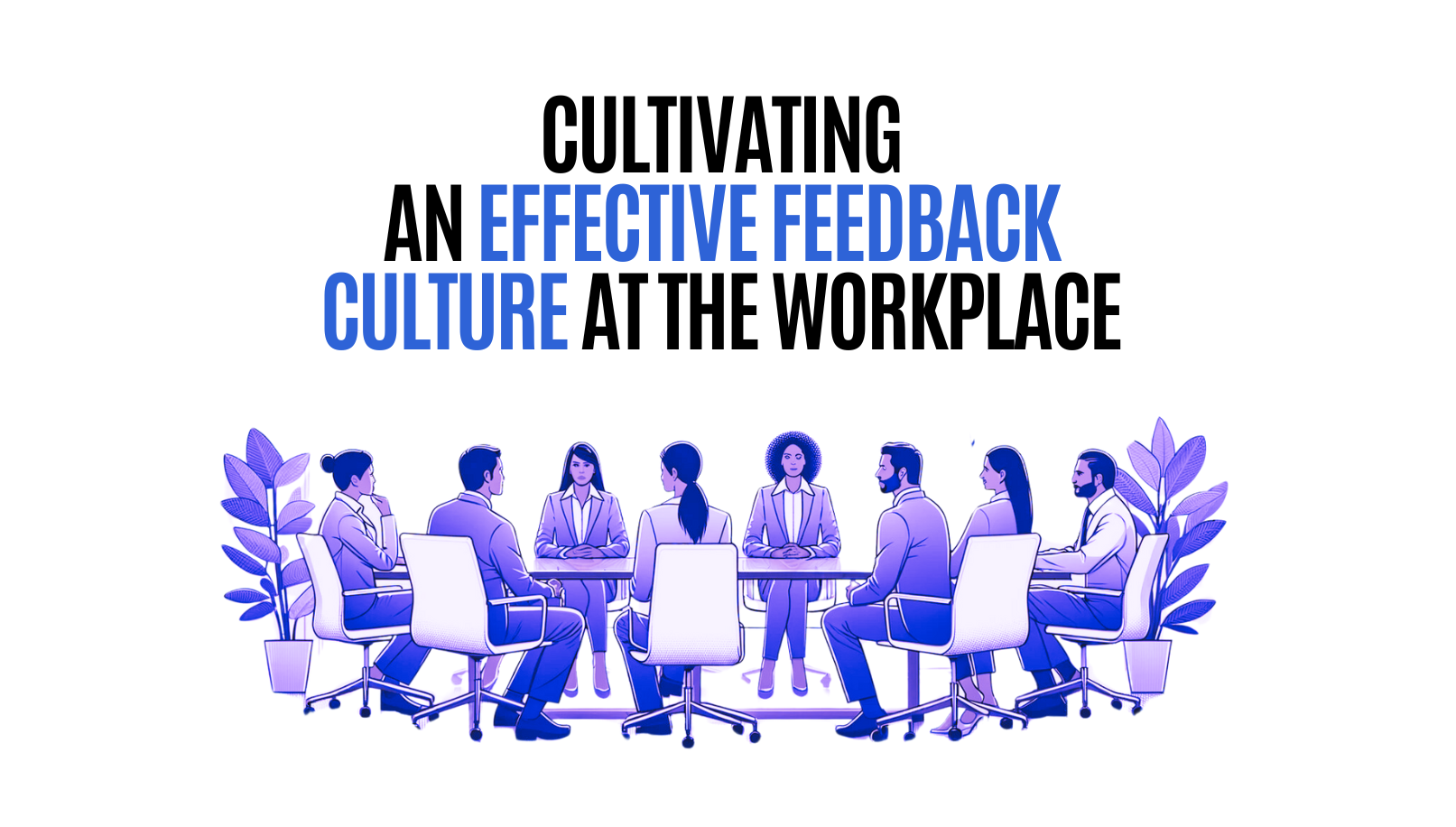Ever heard the saying, "Feedback is the breakfast of champions"? This six-word sentence famously quoted by Ken Blanchard is not just a snappy quote; it's a reality in the corporate world. Imagine starting your day with a hearty breakfast of insightful feedback - sounds energizing, right? In today's bustling business scene, feedback isn't just a pat on the back or a cautionary note; it's a crucial ingredient for growth and success.
This article is all about unwrapping the power of an effective feedback culture. Think of it as a guide to transforming your workplace into a buzzing hub where feedback is as natural as your morning coffee. We’re talking about a world where feedback is not just about correcting mistakes but celebrating successes, fostering growth, and igniting motivation. So, let's dive into how you can make feedback the heartbeat of your organization, shall we?
The Foundation of Feedback Culture
Understanding Feedback Culture
Picture a workplace where every employee’s voice matters, and every opinion shapes the future. That's the essence of a feedback culture. It's not just about giving and receiving critiques; it's about creating an environment where continuous learning, open communication, and mutual respect thrive. In this setting, feedback is like a compass guiding employees and the organization toward success.
A feedback culture is built on three pillars: openness, where everyone feels safe to speak their mind; constructiveness, where feedback is aimed at growth, not criticism; and actionability, where insights lead to tangible improvements. It's a culture where feedback isn't an event but a routine, enriching everyone's work experience.
The Impact of Feedback on Performance and Growth
Now, let's talk about impact. Feedback in the workplace is a game-changer. It's the secret sauce for employee development and organizational growth. When feedback flows freely, employees are more engaged. They understand their roles better, align with company goals, and feel valued. This leads to improved performance, higher morale, and a greater sense of ownership.
Moreover, feedback sparks innovation. By encouraging diverse perspectives and ideas, companies can adapt and thrive in changing markets. In a nutshell, an effective feedback culture is not just a nice-to-have; it's a must-have for any forward-thinking organization aiming for the stars.
Key Strategies for Building Feedback Culture
Steps to Cultivate a Feedback-Rich Environment
Building a culture of feedback connects employees back to their work and helps them feel valued for their contributions. However, creating a feedback-rich environment is like planting a garden – it requires care, patience, and the right conditions to flourish. Here's how to cultivate this fertile ground:
Establish Clear Guidelines: Define what good feedback looks like. It should be specific, timely, and relevant. Set the ground rules for giving and receiving feedback to ensure it's constructive and respectful.
Train Your Team: Equip your employees with the skills to give and receive feedback effectively. Workshops, role-playing sessions, and regular practice can turn feedback into a valuable tool rather than a dreaded chore.
Integrate Feedback into Regular Activities: Embed feedback into daily operations, like team meetings or one-on-ones. Make it a part of your company's routine, not just a yearly appraisal exercise.
Lead by Example: Leaders should actively participate in the feedback process, both as givers and receivers. When management shows commitment, it sets the tone for the rest of the organization.
Celebrate Feedback: Recognize and reward those who actively engage in constructive feedback. This can shift the perception of feedback from a negative experience to a positive, growth-oriented one.
Encouraging Open and Honest Communication
To foster transparency and trust in feedback processes, consider these tips:
Create Safe Spaces: Ensure that employees feel safe to express their thoughts without fear of negative consequences. Psychological safety is key to open communication.
Promote Two-Way Feedback: Encourage a dialogue, not a monologue. Feedback should be a conversation where both parties can speak and listen.
Acknowledge Emotions: Recognize that feedback can evoke strong emotions. Approach sensitive topics with empathy and understanding.
Be Consistent: Regular and predictable feedback helps build trust over time. Inconsistency can lead to uncertainty and mistrust.
Use Technology Wisely: Leverage tools like anonymous surveys or feedback apps to gather honest opinions, especially on sensitive issues.
Building a feedback culture isn't an overnight change. It's a journey of transforming your workplace into a vibrant ecosystem where feedback is the nourishment that fuels growth and innovation.
Incorporating Feedback into Daily Operations
Making Feedback a Routine Practice
Integrating feedback into the daily grind isn’t just beneficial; it’s transformative. Here’s how to make it a standard part of your organizational rhythm:
Embed in Daily Interactions: Encourage teams to incorporate feedback into regular meetings and one-on-ones. It can be as simple as starting a meeting with, “What’s one thing we did well this week and one area for improvement?”
Celebrate Small Wins and Learn from Losses: Create a culture where small achievements are acknowledged and mistakes are seen as learning opportunities, not failures.
Set Clear Expectations: Be transparent about what kind of feedback is helpful and how it should be delivered. This clarity helps prevent miscommunication and ensures feedback is constructive.
Feedback as Part of Performance Reviews: Make sure feedback isn’t just an annual event. Regular, informal check-ins can provide ongoing guidance and support to employees.
Tools and Techniques for Continuous Feedback
In today’s digital world, technology can be a game-changer in facilitating continuous feedback:
Feedback Apps and Platforms: Tools like 15Five or Lattice allow for easy tracking and sharing of feedback. They’re great for keeping a pulse on team morale and performance.
Anonymous Feedback Channels: Sometimes, anonymity can encourage more honest feedback. Tools like SurveyMonkey or even a simple suggestion box can be effective.
Social Recognition Platforms: Platforms like Bonusly allow peers to give shout-outs and recognize each other’s efforts in real time, fostering a positive feedback culture.
Regular Pulse Surveys: Short, frequent surveys can provide insights into team dynamics and individual well-being, allowing leaders to adjust strategies as needed.
By weaving feedback into the fabric of daily operations and utilizing the right tools, organizations can create a dynamic environment where continuous improvement is the norm, not the exception.
Overcoming Challenges in Feedback Culture
Addressing Common Feedback Culture Obstacles
Creating a feedback culture sounds great in theory, but what about the roadblocks? Let's face it, establishing such a culture isn’t without its challenges:
Fear of Negative Repercussions: This is a biggie. People often fear backlash for giving honest feedback. To tackle this, create a safe space where feedback is seen as constructive, not punitive.
Resistance to Change: Some may see feedback as unnecessary criticism. Combat this by educating teams on the value of feedback for personal and professional growth.
Lack of Training: Not everyone knows how to give or receive feedback effectively. Address this by offering training sessions and resources.
Time Constraints: “We’re too busy for feedback” is a common refrain. Make feedback so integrated into daily routines that it becomes second nature, not an extra task.
Conclusion
To wrap it up, fostering an effective feedback culture is more than a nice-to-have; it’s a must for any forward-thinking organization that aims for workplace happiness. It’s about building a foundation where continuous improvement is part of the daily narrative. Remember, the journey to a robust feedback culture is ongoing – it evolves, adapts, and grows, just like your organization. So, take that first step, embrace the challenges, and watch as your team and business flourish in an environment where feedback is not just welcomed, but celebrated.





